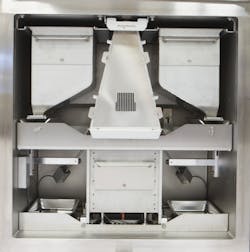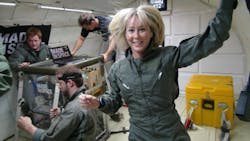Don't try this at home: Industrial already dominates 3D printing
Bleeding edge leads the way: Made in Space takes 3D printing to space.
According to new research by Wohlers Associates, the real growth in 3D printing is already dominated by industrial applications.
Additive manufacturing is a $2 billion industry, thanks in part to epic expansion of low-cost "personal" printing over the last decade. (Personal additive manufacturing is that associated with machines under $5,000 and the hobbyist-level products they make.) This segment grew 346% annually from 2008 to 2011, but dramatically slowed to 46% last year. It's the segment that excites copious attention, largely because the parts created by DIY designers are so relatable.
However, in 2012 nearly a third of the 3D-printing industry's actual sales came from finished commercial parts — with the biggest gains from specialty medical, automotive, and aerospace components. In these applications, bleeding-edge and mass-produced products intersect. Consider Arcam, the Swedish company that uses electron-beam melting (EBM) to 3D manufacture medical impants. "Most people think EBM is used to make custom implants but it is widely used to make standard implants,” the company's president told us last year.
That level of manufacturing sophistication isn't a far cry from that of Made in Space Inc., a startup partnering with NASA, Autodesk, TrinityLabs, and others to build parts in space via extrusion-based techniques. Right now, the company aims to build hardware and emergency replacement parts on the International Space Station. In the future, they hope to print research megastructures that would otherwise be impossible to launch from Earth.
President of Wohlers Associates Terry Wohlers — who's studied the industry for more than 17 years — postulates that high-end parts (think Arcam's orthopedic implants and performance car parts to reduce weight) will continue to dominate the industry's actual revenue. He also predicts that online retailers and not home printers will supply everyday consumer-level products as 3D printing evolves.
By 2017, Wohlers estimates that additive-manufacturing products and services will reach $6 billion worldwide. By 2021, the industry could reach $10.8 billion.
About the Author
Elisabeth Eitel Blog
Elisabeth is Senior Editor of Machine Design magazine. She has a B.S. in Mechanical Engineering from Fenn College at Cleveland State University. Over the last decade, Elisabeth has worked as a technical writer — most recently as Chief Editor of Motion System Design magazine.


